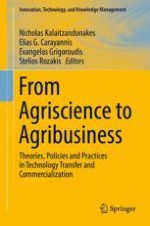2018 | OriginalPaper | Buchkapitel
Patent Characteristics and Patent Ownership Change in Agricultural Biotechnology
verfasst von : Etleva Gjonça, Amalia Yiannaka
Erschienen in: From Agriscience to Agribusiness
Aktivieren Sie unsere intelligente Suche, um passende Fachinhalte oder Patente zu finden.
Wählen Sie Textabschnitte aus um mit Künstlicher Intelligenz passenden Patente zu finden. powered by
Markieren Sie Textabschnitte, um KI-gestützt weitere passende Inhalte zu finden. powered by
